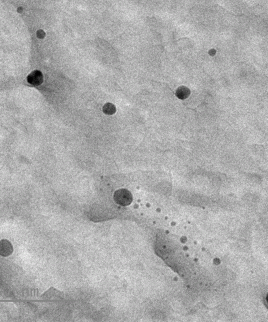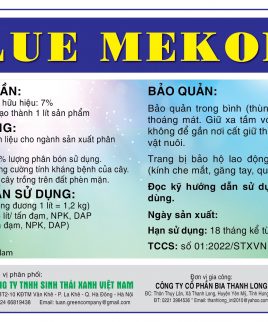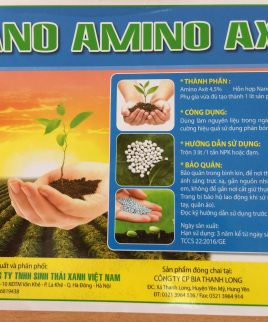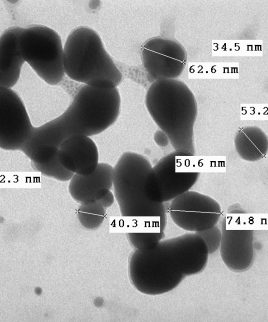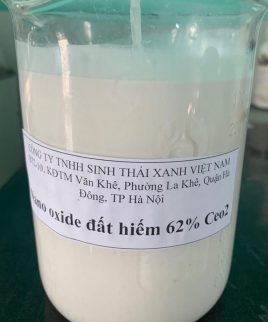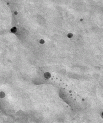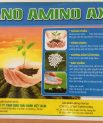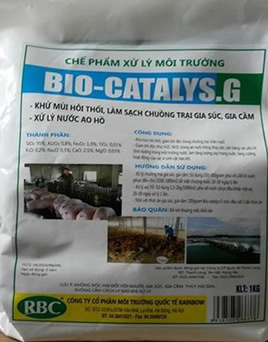Hỗ trợ khách hàng 24/7: 04.66819438– Hotline: 0989207695
Mô tả sản phẩm
VIETNAM GREEN ECOLOGY JOINT STOCK COMPANY
Address: BT02-10 Van Khe New Urban Area – La Khe Ward – Ha Dong District – Hanoi
Phone number: 02466819438
NANOZYME PRODUCT AND ITS APPLICATIONS IN AGRICULTURE
- General Introduction
Enzymes in soil play a pivotal role in ecosystem processes as they catalyze numerous reactions within the soil. Extracellular enzymes can significantly impact microbial communities by hydrolyzing insoluble or insoluble substrates, making them available for direct microbial uptake.
Soil enzymes are prominent contributors to organic matter decomposition and nutrient mineralization, generating energy and NH4 for plant growth. These enzymes are influenced by soil factors such as crop history, organic matter content, depth, agricultural practices, heavy metals, and environmental variables like temperature, pH, and water availability. Reports suggest that enzyme activity and regulation depend on factors like plant type, growth stage, season, CO2 levels, crop rotation, available precursors, root exudate composition, and more. Each element has a cumulative effect of enhancing the enzymes present in the soil rather than the microbial population. Enzymes can indicate soil degradation levels and the soil’s ability to recover. Stable enzymes immobilized on soil colloidal surfaces and introduced into soil have shown potential in reducing various soil pollutants, especially heavy metals.
Therefore, the application of enzyme technology in agriculture, particularly in the field of horticulture, is essential. It enhances soil fertility, promotes mineralization processes, decomposes organic matter, reduces the impact of heavy metals, minimizes stress on crops, decreases fertilizer use, mitigates environmental pollution, reduces CO2 emissions, lowers production costs, improves crop quality, and reduces nitrate levels in products.
Hence, the development of an industrial enzyme with a large quantity, cost-efficiency, and adaptability to various pH, temperature, and pressure conditions, is a cofactor in the soil environment imperative.
Vietnam Green Ecological Joint Stock Company has conducted research to create metal oxide nanoparticles with physical, chemical, biological, catalytic, and cofactor properties resembling natural enzymes, termed nanozymes (enzyme-like).
Therefore, supplementing industrially produced nanozymes into the soil is essential for enhancing soil health, promoting organic matter decomposition, mineralization, soil detoxification, and improving crop resistance to disease-causing microorganisms. It also mitigates stressors such as drought, salinity, temperature extremes, excessive fertilizer use, and pesticide applications.
Nanozyme Definition: Nanozyme is a combination of metal oxide nanoparticles with the properties of enzymes. They are artificial enzymes that catalyze various reaction processes and act as cofactors enhancing enzyme activity. Nanozymes exhibit remarkable stability under conditions of varying temperature, pressure, pH, and other environmental factors.
Natural enzymes have limitations, including low thermal stability, narrow pH, and temperature tolerance, which can denature and significantly inhibit enzyme activity. Low-temperature tolerance also imposes strict requirements on storing, transporting, and handling natural enzymes, demanding substantial effort and infrastructure from users.
Nanozymes offer better structural stability than their natural counterparts, with broader physical (e.g., temperature) and chemical (e.g., pH) activity ranges. This is especially true for unpredictable outdoor environmental conditions compared to more stable in vivo or in vitro environments.
Hence, the Eco-nanomix product is a combination of nanozymes tailored to meet the demands of agricultural production under natural conditions.
- Mechanism of Action of the Product
Nanozyme particles are synthetic enzymes possessing multifunctional enzyme-like properties. They act as catalysts in reactions and cofactors, enhancing the activity of enzymes in the environment.
The Eco-nanomix product (a collection of nanozymes) has various effects on the physical and chemical properties of the soil.
- Increase soil porosity
– Nano metal oxides enhance soil particle density.
– Increase the presence of structurally organized organic matter and its solubility in soil.
– Enhance water retention capacity.
– Reduce soil bulk density, increasing soil porosity, creating a well-aerated soil environment that reduces methanogen bacterial activity and gas emissions from waterlogged soil, thereby promoting root growth.
– Increases aggregates (single soil particles) of individual soil particles, resulting in larger-sized soil particles, reducing erosion and degradation.
2.2 Enhance Cation Exchange Capacity (CEC)
– Increase CEC by 17%. Higher CEC equates to greater nutrient adsorption capacity, increasing nutrient storage in the soil. This, in turn, prolongs fertilizer retention in the soil, reducing the risk of nutrient leaching and saving fertilizer during cultivation.
- 3. Increase oxidation-reduction potential
– Enhance the soil’s oxidative and reductive potential, promoting mineralization of inorganic compounds and decomposition of organic matter in the soil.
– Decrease the risk of organic matter toxicity to plants and increase nutrient absorption by crops.
2. 4. Increase electrical conductivity
– Increase the concentration of soluble substances in the soil, resulting in higher electrical conductivity (EC). However, this depends on the type of cations present in the soil solution.
- Impact of Nanozyme Particles in NPK Fertilizers
Nanoparticles within NPK fertilizers have high surface energy, large surface area, high adsorption capacity, catalytic activity, accelerating reactions in the soil, and cofactors that catalyze inactive enzymes in the soil to become more active. When applied to the soil, nanozyme particles enhance the adsorption capacity of soil colloids, improving ion exchange.
– Increased adsorption capacity of soil colloids leads to prolonged retention of NPK nutrients in the soil for an extended period.
– Nanoparticles in NPK fertilizers enhance soil electrical conductivity, facilitating mineralization.
– Nanozymes in the soil expedite organic matter decomposition, reducing the risk of organic toxicity.
Fertilizers with Nanoparticles can release nutrients slowly over 40–50 days compared to 4–10 days for traditional fertilizers.
The effectiveness of conventional fertilizers is often low, with nitrogen at only 40–50%, phosphorus at 20–25%, and potassium at 35–40%. Therefore, NPK fertilizers with nanozyme particles positively impact agriculture by reducing fertilizer usage while maintaining productivity.
- Characteristics of the Eco-nanomix Product
- Produced using environmentally friendly nanotechnology with particle sizes as small as 100 nm.
- Enhances rapid nutrient absorption by plants through leaf stomata or root uptake.
- Comprises Nanoparticles such as ZnO, TiO2, and SiO2, along with supplementary additives.
Transmission Electron Microscope (TEM) images of some Nanoparticles.
- Benefits of the Eco-nanomix Product
- Enhanced Foliage Development: During both the vegetative and reproductive growth stages, Eco-nanomix promotes lush, high chlorophyll content foliage, resulting in improved photosynthetic efficiency.
- Enhanced Metabolic Activity: Metal oxide nanoparticles balance metabolic processes, and biochemical reactions within plants and harmonize internal microorganisms in vegetation,
- Mitigation of Biological Stress: They reduce the adverse impact of biological stress factors on plants, including harmful insects and pathogenic microorganisms such as bacteria, fungi, nematodes, and viruses.….
- Alleviation of Abiotic Stress: They also alleviate the detrimental effects of abiotic stressors on plants, such as drought, salinity, extreme temperatures, excessive fertilizer application, and heavy pesticide spraying…
- Increased Photosynthetic Efficiency: It enhances photosynthesis in plants by up to 20-30%, leading to higher crop yields.
- Improved Nutrient Absorption: It enhances metabolic activity and nutrient absorption, reducing the need for multifold nutrient application and lowering fertilizer costs by 30-50%.
- Root Development: Eco-nanomix fosters robust root development, facilitating overall plant growth.
- Enhanced Grain and Fruit Quality: It leads to fuller and larger grains or fruits with superior flavor profiles.
- Increased Crop Yield: Eco-nanomix significantly boosts crop productivity.
- Disease Resistance: It enhances plant resistance to certain diseases caused by fungi and bacteria.
- Enzyme Activation: Activates soil enzymes, enhancing mineralization and organic matter decomposition, maintaining nutrient balance, and improving soil health.
- Reduced NPK Fertilizer Usage: It reduces NPK fertilizer usage by 30-50% in a single rice cultivation season.
- Reduced Fertilizer Application Frequency: Only 1-2 applications during a single crop cycle, especially for rice.
- Effective on Saline and pH 5-6 Soils: It performs effectively in saline soils and soils with pH levels ranging from 5 to 6.
- Usage Guidelines
In fertilizer production: Mix 5 liters per 1 ton of NPK or Urea fertilizer.


